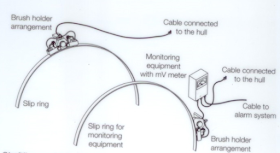DG Shipping has taken new initiate for the processing of oil, chemical and gas dangerous cargo endorsements certificate online (DC Endorsements) for Level 1 (Operational or Basic) and for Level 2 (Advanced or management level). Now we dont have to personally visit MMD for documet submission or collecting certificate. Everything can be made online. This article defines you the step by step process for the online application.
1) Open www.dgshipping.gov.in
2) Go to e-governance and log in using your INDOS number and password


11) Once the application number is generated, you can click on Pay Now link to proceed for payment. You can make payment with debit card, credit card, net banking and wallet.
12) Make payment
13) You will get the acknowledgment receipt

14) Now next step is to upload the certificates. Go to the home page and click on DC, COC endorsements as we did earlier. Now click on the link pay COC, COP fees, upload documents.
16) You can see the below page with comment, Documents successfully uploaded.

17) Now you can check the status of your application by visiting the link PAY COC, COP FESS, LOAD DOCUMENTS AND VIEW STATUS link.
Once the status shows approved, you can personally collect the document from the MMD if you have selected the mode as BY HAND or you will receive by post if you have selected the mode as BY POST
GIVE US YOUR VALUABLE COMMENTS AND SUGGESTIONS. ALSO LIKE OUR FACEBOOK PAGE AND FOLLOW US ON GOOGLE TO GET ALL UPDATES. SHARE WITH YOUR FRIENDS
WATCH VIDEO
1) Open www.dgshipping.gov.in
2) Go to e-governance and log in using your INDOS number and password
3) Open the tab COC, DC endorsement, GMDSS Radio operator

4) Select basic (type 1 for operational level) or Advanced (type 2 for management level)

5) All your personal details will be there by default. In this page you have select MMD name type of dce required (Chemical, oil or gas), New or Renewal. Require all other details as required and press continue
6) Enter your postal adress and select you want DCE BY POST or will collect BY HAND
7)Enter the certificate details
i) AFF/basic fire fighting
ii) Ref AFF/ Ref basic fire fighting
iii) advanced/ basic tanker familiarization course
8)Enter your seatime and cargo carried
9) Next pae shows the fees to be paid
i) Rs 3000 for Basic
ii) Rs 4500 for Advanced
10) If all datas are entered, then generate the APPLICATION NUMBER. Make sure all datas are entered correctly before this step. Datas cannot be changed after this step.
11) Once the application number is generated, you can click on Pay Now link to proceed for payment. You can make payment with debit card, credit card, net banking and wallet.
12) Make payment
13) You will get the acknowledgment receipt

14) Now next step is to upload the certificates. Go to the home page and click on DC, COC endorsements as we did earlier. Now click on the link pay COC, COP fees, upload documents.
You can also pay the fees later with this link.
15) You can upload the required files from here
i) Signed application form in pdf format
ii) Photograph in jpg format as per specification
iii) Signature as per specification in pdf format
iv) Certificates in one pdf file
v) Compnay letter in pdf format
vi) old dce certificate in pdf format
vii) Self attested pdf file of CDC showing all relevant sea time
Upload the documents16) You can see the below page with comment, Documents successfully uploaded.

17) Now you can check the status of your application by visiting the link PAY COC, COP FESS, LOAD DOCUMENTS AND VIEW STATUS link.
Once the status shows approved, you can personally collect the document from the MMD if you have selected the mode as BY HAND or you will receive by post if you have selected the mode as BY POST
GIVE US YOUR VALUABLE COMMENTS AND SUGGESTIONS. ALSO LIKE OUR FACEBOOK PAGE AND FOLLOW US ON GOOGLE TO GET ALL UPDATES. SHARE WITH YOUR FRIENDS
















